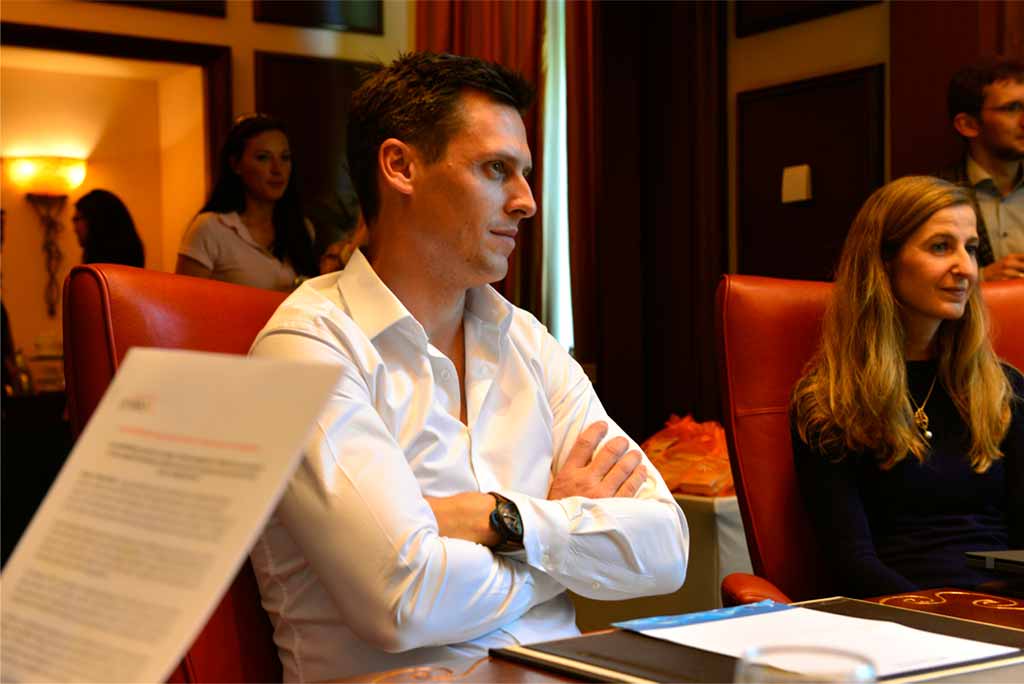The Middle East is a burgeoning space for e-commerce and m-commerce with over 100 million Internet users in the region, and according to Nielsen, the smartphone penetration rate in the UAE is currently 78% percent. Additionally, IDC ranks the UAE as the leader in the region when it comes to online shopping, with approximately 87% of the population having made at least one online purchase in the past year.
With over $430 billion in sales transactions, Criteo is a “personalized retargeting company” that works with Internet retailers to serve personalized online display advertisements to consumers that have previously visited the advertiser’s website. Now, they mean business because, they made an astounding $19 billion in post-click sales for its clients. B-Change sat down with Dirk Henke, Managing Director Eastern Europe & MEA, Criteo, to talk about how their strategy, the mobile phenomenon and how they achieve success.
1. Across various cultures, what do you see as common factors that affect how consumers react to mobile ads?
Globally, the way we interact with mobile devices is changing rapidly. This change in user behavior is driven by major enhancements to mobile devices, such as faster connections and bigger screens, which have resulted in growth in Mobile Commerce. One in three online purchases is being completed via a mobile device – a number that is expected to grow.
These changes have also impacted how we perceive mobile ads. The quality of mobile ads has improved dramatically compared to what we were seeing just a few years ago. Mobile ads have become more relevant to the user which has driven an increase of clicks and sales.
2. Is it all about just the placement of the ad? What other factors do you see affecting the click-thru?
The placement of an ad is just one factor, but success in display advertising depends on many more. It’s mainly about showing the right ad, with the right content, to the right user, at the right time. For example, Criteo’s ads have a click-through rate that is five times higher than the average display ads. This is because we always try to make our ads as relevant and appealing to a single user as possible. We calculate in real-time which product a certain user is most likely interested to be in at that time, which ad format works best for him or her, the creative assets and many more. If the ad is appealing and relevant for this user, he or she will more likely click on it, and it becomes even likelier for this user to purchase an item from the advertiser’s website.
3. How are you reacting to Google’s new algorithm? Does this affect Criteo at all?
Criteo is successful because we provide our clients a full multi-channel solution across different devices – desktop, tablet and smartphone. With the significant growth of m-commerce, which already accounts for almost every third online purchase in the UAE, the need for advertisers to cater to mobile audiences becomes more pressing than ever. The new Google algorithm, which ranks mobile pages higher when mobile searches are done, is just one more reason for advertisers to optimize their web

offerings for mobile.
4. What do you think helps tilt the consumer decision in the end (with regard to buying something online. Something they navigated through via a Criteo ad)?
Because our recommendations are based on a consumer’s browsing behavior, our prediction engine can calculate which product a user will most likely be interested in. This is not necessarily a previously viewed product. In the fashion industry for example, 80% of the products purchased after clicking a Criteo ad are not the same products that a user had actively searched for or seen on the advertiser’s website.
5. How do you get around the stigma surrounding e-commerce?
In MENA, digital sales account for just 1% of total sales so far, a figure that still needs to rise. At the same time, however, this region is among the fastest growing in the world in terms of digital commerce, with 33% growth year on year (compared to a worldwide average growth of just 17%). On top of that, UAE, Oman, Kuwait and Saudi Arabia feature among the world’s top emerging markets for global retail expansion. All these retailers bring their digital e-commerce platforms with them, giving digital sales an additional boost. Finally, enhancements in mobile devices and the boom of m-commerce contribute to bridge the gap between physical and digital shopping, making digital commerce part of daily life.
6. What does a Criteo creative brief generally look like/consist of?
We’ve established unique products and competence to build dynamic ads with the highest possible performance. That means we produce a set of ad templates for any client, which go along with their Corporate Identity guidelines. Although we do not create branding campaigns, our designs still are proven to drive performance.
7. As market leaders, (apart from sales), do you set other targets for your company? What are they and what do you benchmark them against?
We have defined three key priorities that we apply globally and regionally. First, to help our clients expand their marketing channels, so they can relevantly address their customers across as many different channels and devices. Second is to continue to innovate in products and technology. Last year, for example, we made major enhancements to our Criteo engine to optimize on client sales. Our final priority is to grow our global presence. The recent opening of our Dubai office as a central hub for the MENA region was an important step to even better serve our local clients’ needs.
8. Is there a way for a user to duck under the Criteo radar?
Advertising is what keeps the Internet alive – most content in the Internet is cost-free for users because of advertising, and our goal at Criteo is to make this advertising as relevant as possible for the user. Saying this, there is no need to duck; by being more relevant to every individual, our ads turn into a service offering for all users, as they are shown personalized recommendations. At the same time, we always aim to be as transparent as possible. In 2009, we were one of the first companies to add the information icon (i) to every ad—this was long before this practice became an industry standard. Users can click on the icon to get more information about the ad: why they see it, which data we use to display this ad, and how a user can opt-out in case he does not want to see Criteo ads.





![Social alienation is a sharp tactic in the toolkit of domination [although, here it is the extension of female subordination]. Photo by Hans Van Den Berg/ flickr.com](https://b-change.me/wp-content/uploads/2018/01/1sTnAkZgJEx1Yb6fctMyVuA-570x300.jpeg)





